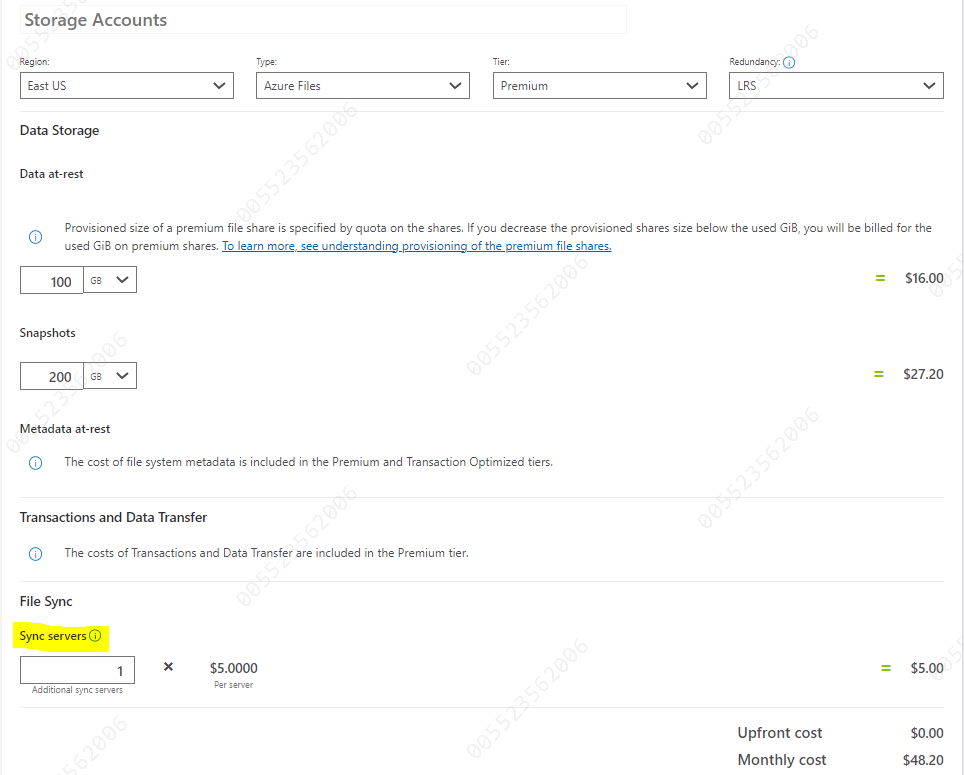@Madhu Welcome to Microsoft Q&A Forum, Thank you for posting your query here!
How billing is calculated when we move from azure file share to file sync agent?
Cache Azure file share on-premises with Azure File Sync. Azure File Sync enables you to centralize your organization's file shares in Azure Files, while keeping the flexibility, performance, and compatibility of an on-premises file server. Azure File Sync transforms an on-premises (or cloud) Windows Server into a quick cache of your Azure file share.
Consult the Principles of cost optimization page in the Azure Well-Architected Framework for cost optimization recommendations.
The Azure Storage Pricing page provides detailed pricing information based on account type, storage capacity, replication, and transactions.
The Data Transfers Pricing Details provides detailed pricing information for data egress.
You can use the Azure Storage Pricing Calculator to help estimate your costs.
If I add value added service to sync there will be any charges?
Like on-premises storage solutions that offer first- and third-party features and product integrations to add value to the hosted file shares, Azure Files provides integration points for first- and third-party products to integrate with customer-owned file shares. Although these solutions may provide considerable extra value to Azure Files, you should consider the extra costs that these services add to the total cost of an Azure Files solution.
Costs are broken down into three buckets:
Licensing costs for the value-added service. These may come in the form of a fixed cost per customer, end user (sometimes called a "head cost"), Azure file share or storage account. They may also be based on units of storage utilization, such as a fixed cost for every 500 GiB chunk of data in the file share.
Transaction costs for the value-added service. Some value-added services have their own concept of transactions distinct from what Azure Files views as a transaction. These transactions will show up on your bill under the value-added service's charges; however, they relate directly to how you use the value-added service with your file share.
Azure Files costs for using a value-added service. Azure Files does not directly charge customers costs for adding value-added services, but as part of adding value to the Azure file share, the value-added service might increase the costs that you see on your Azure file share. This is easy to see with standard file shares, because standard file shares have a pay-as-you-go model with transaction charges. If the value-added service does transactions against the file share on your behalf, they will show up in your Azure Files transaction bill even though you didn't directly do those transactions yourself. This applies to premium file shares as well, although it may be less noticeable. Additional transactions against premium file shares from value-added services count against your provisioned IOPS numbers, meaning that value-added services may require provisioning more storage to have enough IOPS or throughput available for your workload.
When computing the total cost of ownership for your file share, you should consider the costs of Azure Files and of all value-added services that you would like to use with Azure Files.
There are multiple value-added first- and third-party services. This document covers a subset of the common first-party services customers use with Azure file shares. You can learn more about services not listed here by reading the pricing page for that service.
If you still have any questions related to Azure File pricing I would recommend to please reach out to the Azure billing team, Billing and Subscription team would be the best to provide more insight and guidance on this scenario: https://azure.microsoft.com/en-us/support/options/ it's a Free support
Please let us know if you have any further queries. I’m happy to assist you further.
----------
Please do not forget to  and “up-vote” wherever the information provided helps you, this can be beneficial to other community members.
and “up-vote” wherever the information provided helps you, this can be beneficial to other community members.


